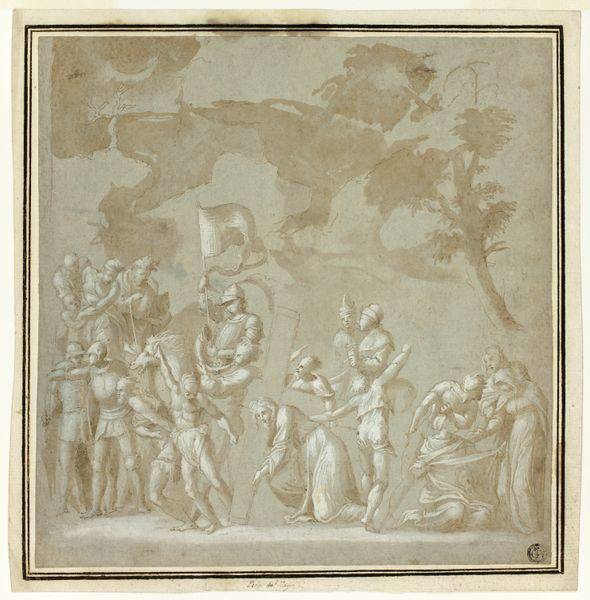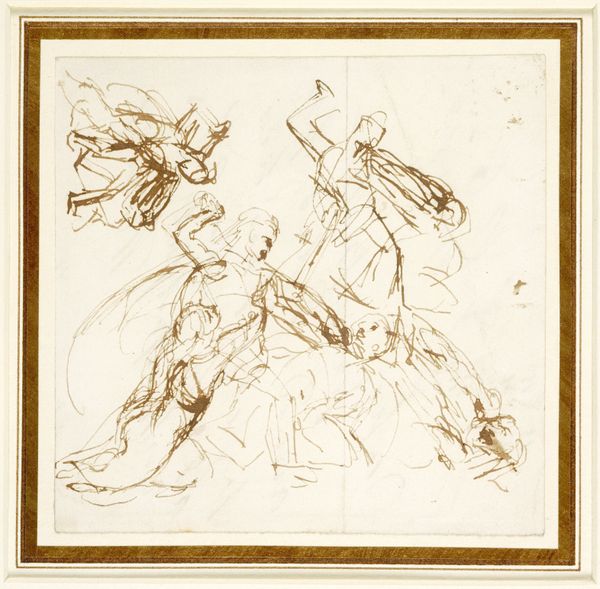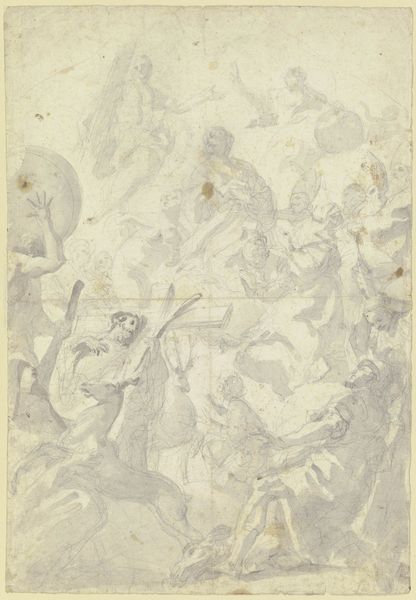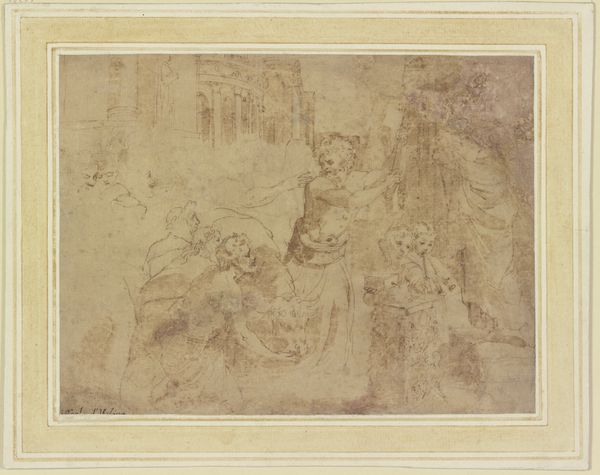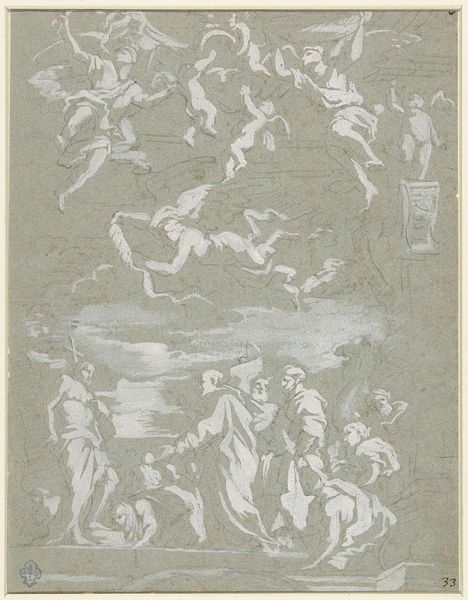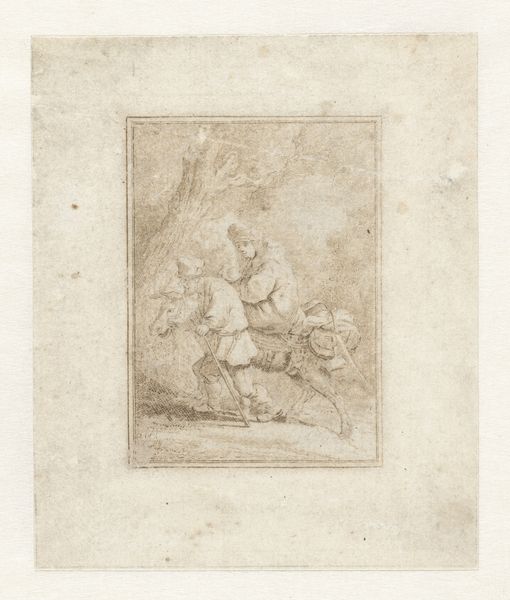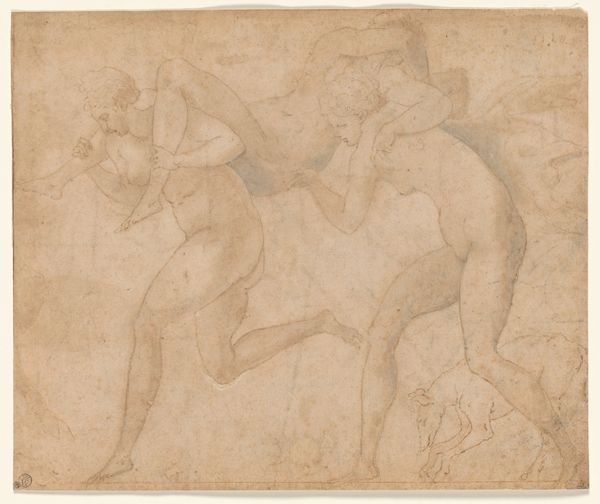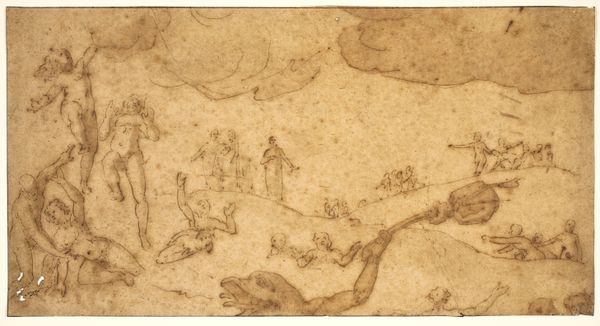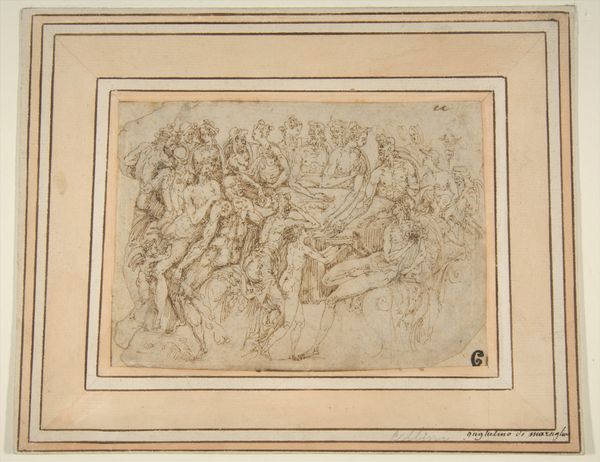
drawing, print
#
drawing
#
natural stone pattern
#
aged paper
#
toned paper
# print
#
light earthy tone
#
tile art
#
carved into stone
#
earthy tone
#
underpainting
#
wooden texture
#
watercolor
Dimensions: 6 1/2 x 7 1/4 in. (16.5 x 18.4 cm)
Copyright: Public Domain
Curator: This drawing, simply titled "Cherubs," comes to us from the period of 1500 to 1600. It resides here at The Metropolitan Museum of Art, a fine example of Renaissance draftsmanship. Editor: They're wonderfully chubby, aren’t they? The wash drawing gives a sense of them caught mid-flight. Almost feels like eavesdropping on some celestial playground. Curator: The imagery of cherubs carries centuries of loaded meaning. Originally, pre-Christian, they guarded sacred spaces and knowledge. It wasn't until the Renaissance they started shifting towards associations with love and innocence. This speaks to how visual symbols get reshaped. Editor: Right, but whose innocence? Think about how often cherubs—especially Renaissance ones—served as ideological justification for wealth and power. We idealize these images while children on earth live very different lives. There is almost no room in our western world for children who aren’t considered innocent anymore. The work hints that even the cherubic form itself cannot escape social or even theological context. Curator: A compelling perspective. Their gestures could even be seen as less innocent than suggestive—playful but even subtly performative for some unknown audience. Look closely, you’ll see faint sketch lines, suggesting Raphael wrestled with their positioning, refining what emotions they would embody, which relates back to performativity and power. Editor: So interesting that the cherubic imagery maintains its power through those variations! A modern audience views them fondly through this filter and we find in them a way to consider both power, memory, and the meaning of innocence. Curator: Ultimately this work helps remind us of those symbolic entanglements. Editor: Indeed. And of our responsibilities when gazing at what appear to be the most 'innocent' of images.
Comments
No comments
Be the first to comment and join the conversation on the ultimate creative platform.
